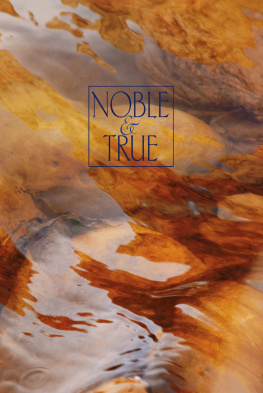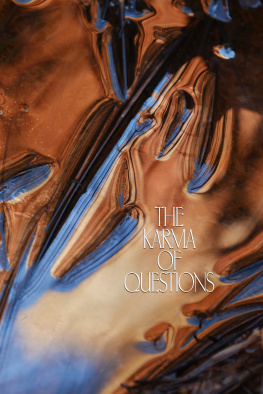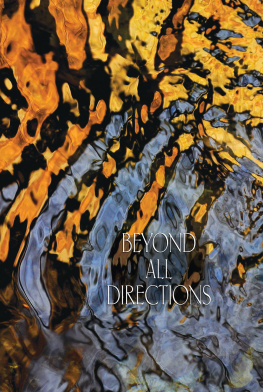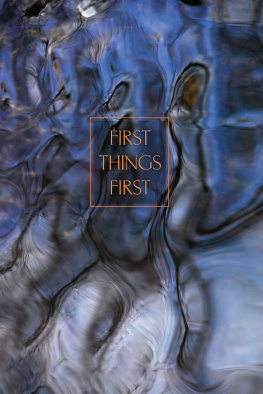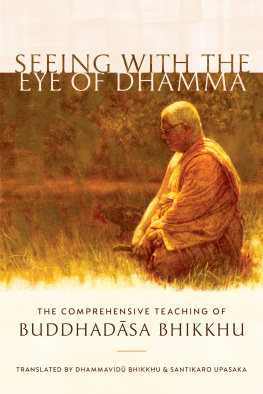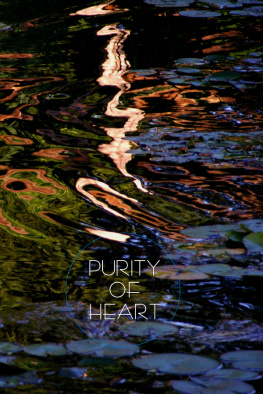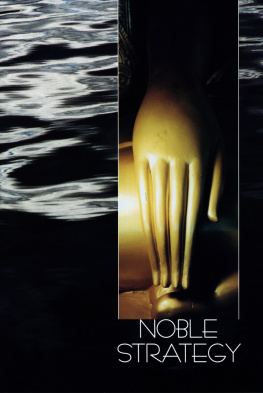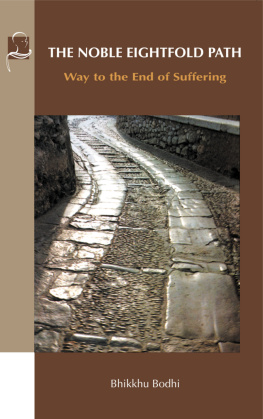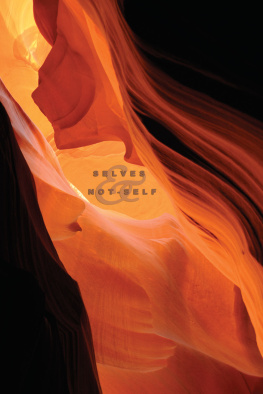Thanissaro Bhikkhu - Noble & True
Here you can read online Thanissaro Bhikkhu - Noble & True full text of the book (entire story) in english for free. Download pdf and epub, get meaning, cover and reviews about this ebook. year: 2016, publisher: Metta Forest Monastery, genre: Religion. Description of the work, (preface) as well as reviews are available. Best literature library LitArk.com created for fans of good reading and offers a wide selection of genres:
Romance novel
Science fiction
Adventure
Detective
Science
History
Home and family
Prose
Art
Politics
Computer
Non-fiction
Religion
Business
Children
Humor
Choose a favorite category and find really read worthwhile books. Enjoy immersion in the world of imagination, feel the emotions of the characters or learn something new for yourself, make an fascinating discovery.
- Book:Noble & True
- Author:
- Publisher:Metta Forest Monastery
- Genre:
- Year:2016
- Rating:4 / 5
- Favourites:Add to favourites
- Your mark:
- 80
- 1
- 2
- 3
- 4
- 5
Noble & True: summary, description and annotation
We offer to read an annotation, description, summary or preface (depends on what the author of the book "Noble & True" wrote himself). If you haven't found the necessary information about the book — write in the comments, we will try to find it.
Noble & True — read online for free the complete book (whole text) full work
Below is the text of the book, divided by pages. System saving the place of the last page read, allows you to conveniently read the book "Noble & True" online for free, without having to search again every time where you left off. Put a bookmark, and you can go to the page where you finished reading at any time.
Font size:
Interval:
Bookmark:
This work is licensed under the Creative Commons Attribution-NonCommercial 4.0 Unported. To see a copy of this license visit http://creativecommons.org/licenses/by-nc/4.0/. Commercial shall mean any sale, whether for commercial or non-profit purposes or entities.
Metta Forest Monastery
Valley Center, CA 92082-1409
U.S.A.
More Dhamma talks, books and translations by Thanissaro Bhikkhu are available to download in digital audio and various ebook formats at dhammatalks.org.
A paperback copy of this book is available free of charge. To request one, write to: Book Request, Metta Forest Monastery, PO Box 1409, Valley Center, CA 92082 USA.
Many people have read earlier versions of these essays and have kindly offered suggestions for improvements. In particular, I would like to thank the monks here at the monastery, as well as Michael Barber, Claude LeNinan, Addie Onsanit, Nathaniel Osgood, Robert Rhyne, Dale Schultz, Mary Talbot, Isabella Trauttmansdorff, and Barbara Wright. Any mistakes that remain, of course, are my own responsibility.
Some of these essays, in earlier incarnations, have appeared in Tricycle and Insight Journal. I would like to thank the editors of these journals for their help in making the writing clearer and more coherent. The fact that the essays were originally written on different occasions for different audiences explains the difference in style among them, as well the occasional overlap in content. I hope that this is not a problem.
These and other essays on Buddhist practice are available on the Internet at www.accesstoinsight.org and www.dhammatalks.org.
hnissaro Bhikkhu
(Geoffrey DeGraff)
Metta Forest Monastery
Valley Center, CA 92082-1409
January, 2016
A short reflection thats often chanted in Theravada monasteries states, in part, I am subject to aging subject to illness subject to death. Thats the standard English translation, but the standard Thai translation is more pointed: Aging is normal for me illness is normal death is normal for me. The extended version of the reflection goes on to say that these things are normal for everyone, no matter where. To be born into any world is to be born into a place where these dangers are normal. They lie in wait right here in the body that, at birth, we laid claim to, and the world around us is full of triggers that can bring these dangers out into the open at any time.
As the reflection concludes, these are good themes to reflect on every dayto keep us heedful of the fact that dangers are to be expected and are not an aberration. That way we can be prepared for them. Otherwise, we tend to forgetand our illusions of safety, when theyre challenged, often lead to unrealistic desires for absolute safety that can cause us to create unnecessary dangers for ourselves and people around us.
Its an often-overlooked feature of the Buddhas teachings that he identified the basis for all our good and skillful qualities as heedfulnessnot innate goodness or compassion: heedfulness. To recognize that there are dangers both within and without, that your actions can make the difference between suffering from those dangers and not, and that youd better get your act together now: This is the heedfulness that makes us generous, wise, and kind. Were kind not because were innately kind. In fact, our minds are so quick to change that theyre not innately anything, good or bad, aside from being aware. If were heedful, were kind not only when others are kind to us or make us feel safe. Were kind because we see that kindness is the safest course of action, even in the face of the unkindness of others.
This is why the Buddha told his monks, when they were ready, to go out into the wilderness to face some of the dangers there, so that they could overcome their complacency and become resourceful in dealing skillfully with threats to their physical and mental well being. That way they could learn to bring out their best qualities even whenespecially whenconfronted with the worst that the wilderness had to offer. Some of the most moving passages in the Pali Canon are the words of monks in the wilds who discovered, in the face of hunger, illness, and dangers from fierce animals, that the best way to keep their minds safe was to take refuge in practicing the Dhamma.
Now, the Buddha wouldnt push the monks into the wilderness right off the bat. He was like a wise parent who provides safety for her children as theyre getting started in life, and then gradually acquaints them with the dangers of the world, providing them with the skills theyll need to negotiate those dangers on their own.
This is why so many of his teachings deal with issues of safety and danger: recognizing what true danger is, what true safety is, and knowing how to best find true safety in both within conditions and beyond them. And he didnt limit these teachings only to monks and nuns. He taught them to all his students, lay and ordained, because wilderness is not the only place where dangers abound. And monastics are not the only ones who can endanger themselves and others by holding to unwise and unrealistic notions about safety and danger. Complacency and the ignorance it fosters are problems for us all.
So its useful to reflect on some of the Buddhas teachings on safety, to get his perspective on the dangers we all must encounter. Because its hard to keep complex teachings in mind when youre face to face with danger, Ill boil the main principles of the Buddhas safety instructions to a few bullet points. That way theyll be easy to keep in mind when you need them most.
The first point puts the remaining points into perspective:
Total safety is possible, but only in nibbna. As long as youre not there yet, you have to accept the fact that youll be forced again and again to sacrifice some things in order to save others that are more valuable. Life in sasra is full of trade-offs, and wisdom consists of learning to make wise trades. If you forget this fact, you tend to float around in a complacent bubble of what you assume to be a karma-free zone where you can have your cake and enlightenment tooand the people who live in complacent bubbles are the ones most likely to thrash around wildly, endangering themselves and others, when that bubble bursts.
The next point focuses on the primary means for finding the total safety of nibbna and relative safety in the world. It forms the basis for all the points that follow.
Your most lasting possessions are your actions. Your body is yours only till death; your loved ones, at best, are yours no longer than that. The results of your actions, though, can carry well past death, so make sure that you dont sacrifice the goodness of your thoughts, words, and deeds to save things that will slip through your fingers like water. Specifically, this means that if you really want to find safety, your strategy cant involve killing, stealing, or telling lies. At the same time, you cant expose yourself to unnecessary dangers by taking intoxicants or engaging in illicit sex. These are the principles of the five precepts, and the Buddha taught them because they really work in safeguarding the people who observe them.
If you really want to protect your loved ones and other people around you from danger, remember that the same principle applies to them: Their most lasting possessions are
Font size:
Interval:
Bookmark:
Similar books «Noble & True»
Look at similar books to Noble & True. We have selected literature similar in name and meaning in the hope of providing readers with more options to find new, interesting, not yet read works.
Discussion, reviews of the book Noble & True and just readers' own opinions. Leave your comments, write what you think about the work, its meaning or the main characters. Specify what exactly you liked and what you didn't like, and why you think so.

